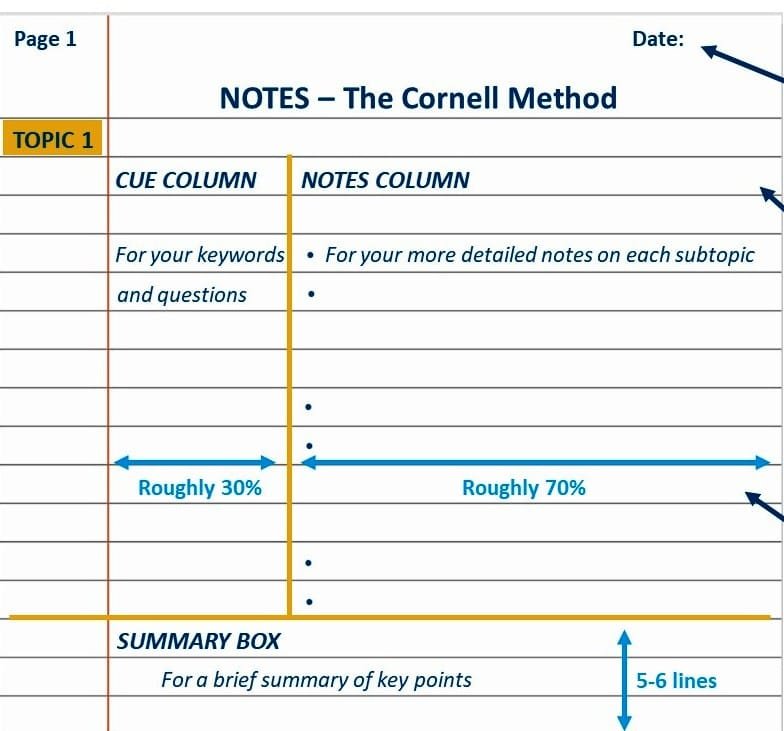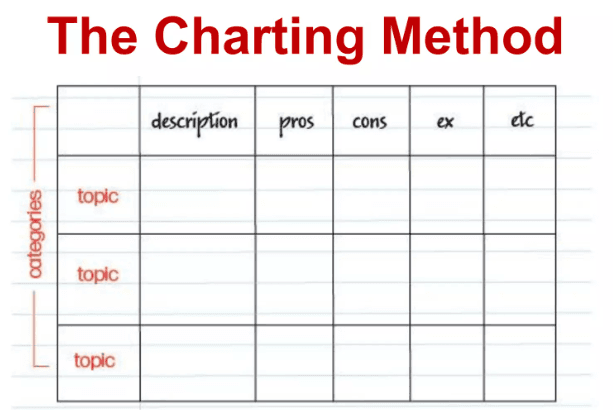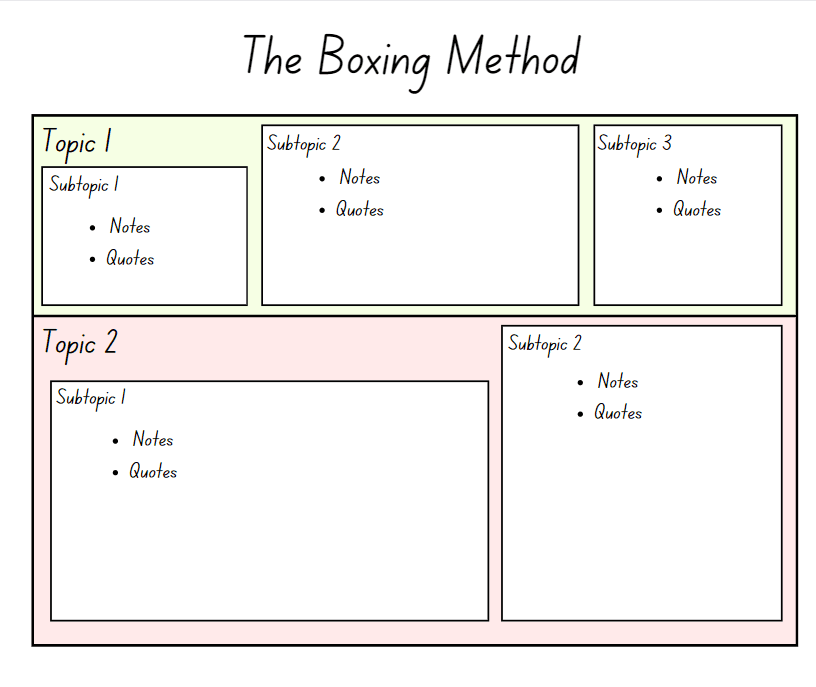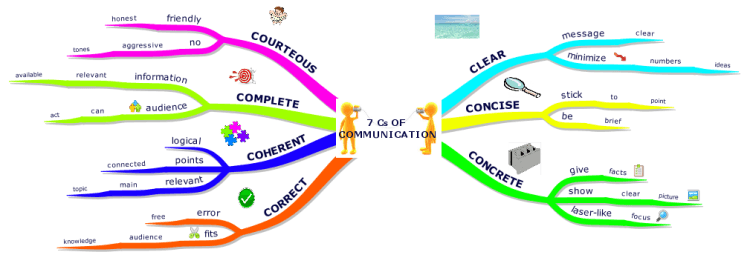Explain the importance and types of note-taking by referring to relevant content.
1. Cornell Method
This method divides the page into three sections: a narrow left column for cues, a wide right column for notes, and a summary section at the bottom.
Importance:
- Efficient organization: It helps to organize notes clearly, making it easy to review and identify key points.
- Active recall: The cue column prompts you to actively engage with the material by turning your notes into questions or keywords.
- Review-friendly: The summary section allows for a quick review of the main points.

2. Mind Mapping
Mind maps are visual representations where you start with a central idea and branch out into related concepts, typically in a hierarchical or circular structure.
Importance:
- Visual learning: Mind mapping helps people who learn better visually, as it shows how information is interconnected.
- Creativity: This method encourages creative thinking, as it allows for the exploration of relationships between concepts.
- Overview and detail: It provides both a high-level view of the topic and detailed subtopics, making complex information more digestible.
3. Outlining
This method involves organizing information in a hierarchical structure, using bullet points or numbers to show the relationship between main topics and subtopics.
Importance:
- Clear structure: Outlining helps in breaking down complex information into manageable chunks, showing the relationship between ideas.
- Ease of review: Since it’s often linear, it’s easy to follow and review key ideas and sub-ideas.
- Efficient for linear thinkers: People who think in a sequential manner benefit from this method as it provides a clear, logical flow.
4. Charting Method
The charting method involves creating columns for categories of information and organizing notes under those columns. This method is particularly useful for comparing facts or organizing data.
Importance:
- Comparison: Ideal for subjects where you need to compare and contrast multiple concepts, facts, or events (e.g., history or science).
- Data-heavy subjects: Helps in organizing numerical or structured data for easy reference.

5. Sentence Method
In this method, you write down each new thought or idea in the form of a sentence. It’s a more free-form way of recording information.
Importance:
- Speed: It allows for quick note-taking during lectures or discussions.
- Flexibility: You can capture information more fluidly, making it suitable for fast-paced environments where detailed structure isn’t as crucial.
- Detailed notes: It captures more detailed information as it records every idea in its entirety, although it can be harder to review.
6. Boxing Method
This method involves dividing the page into sections (boxes), with each box dedicated to one topic or sub-topic.
Importance:
- Separation of ideas: By separating different topics into distinct boxes, this method helps keep each concept organized and easy to review.
- Organized layout: It’s great for visual learners who prefer having a clear separation of topics.

Mind Map Sample

Average Rating